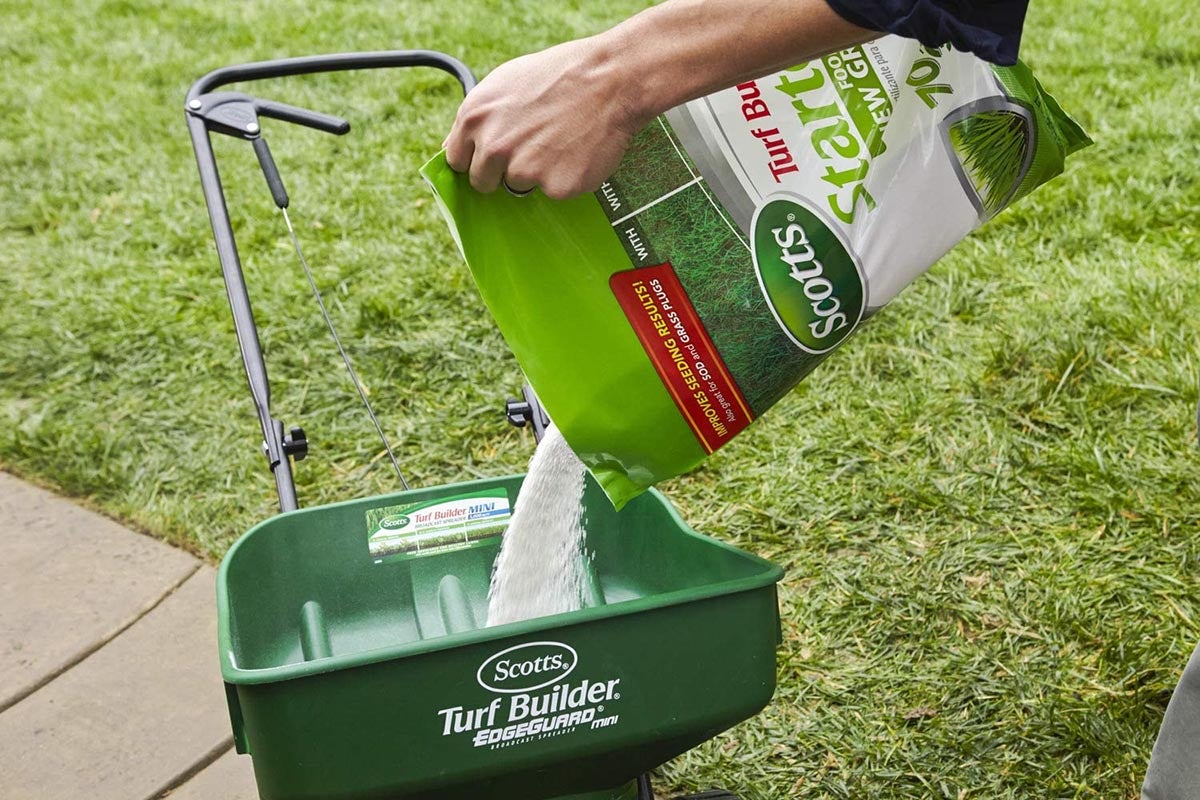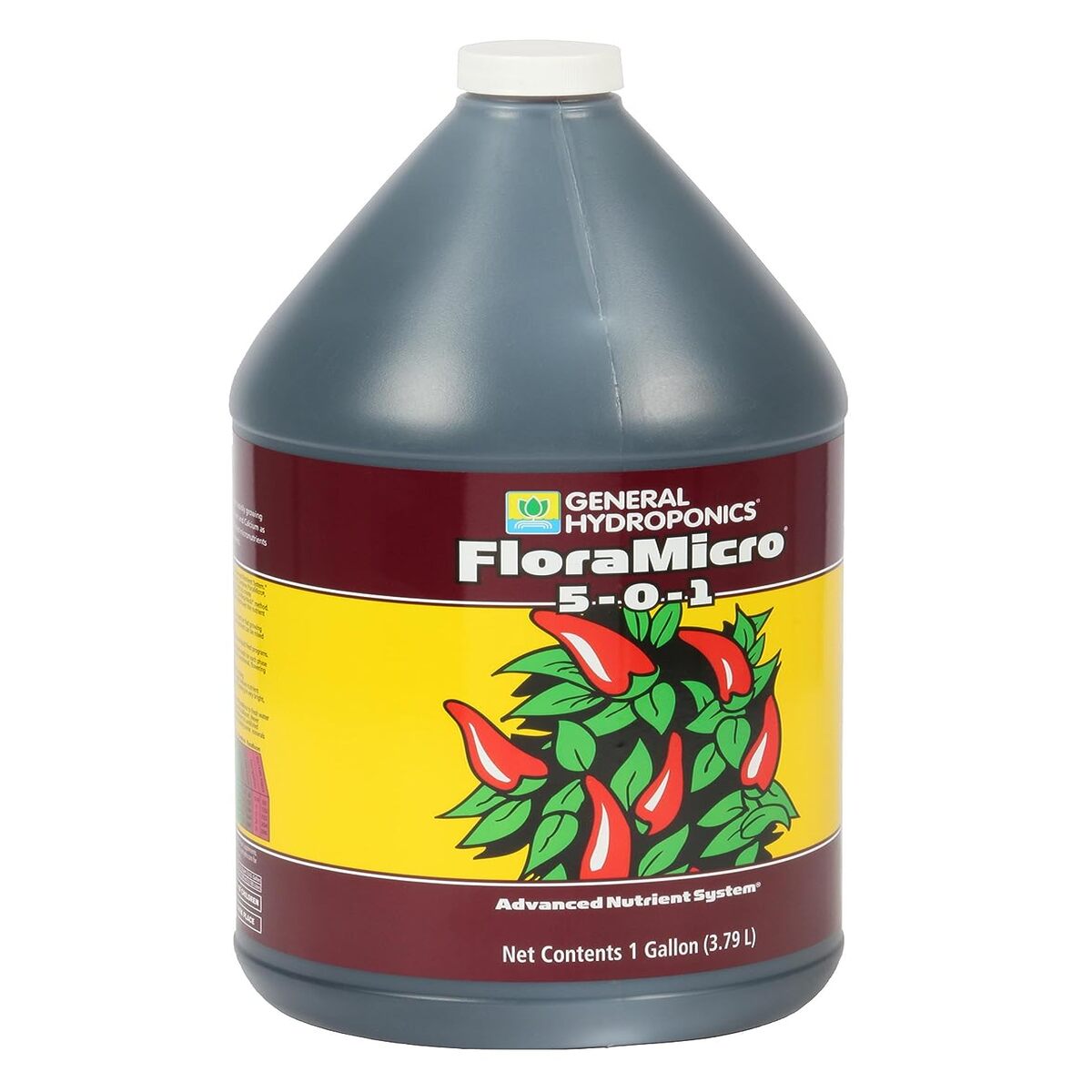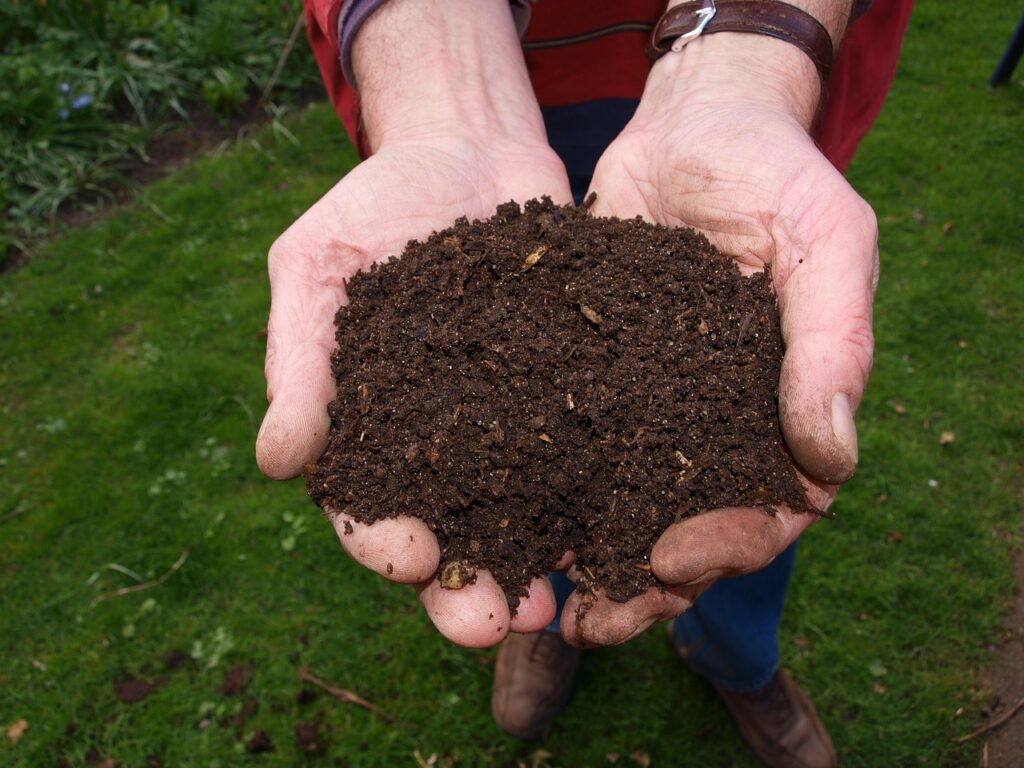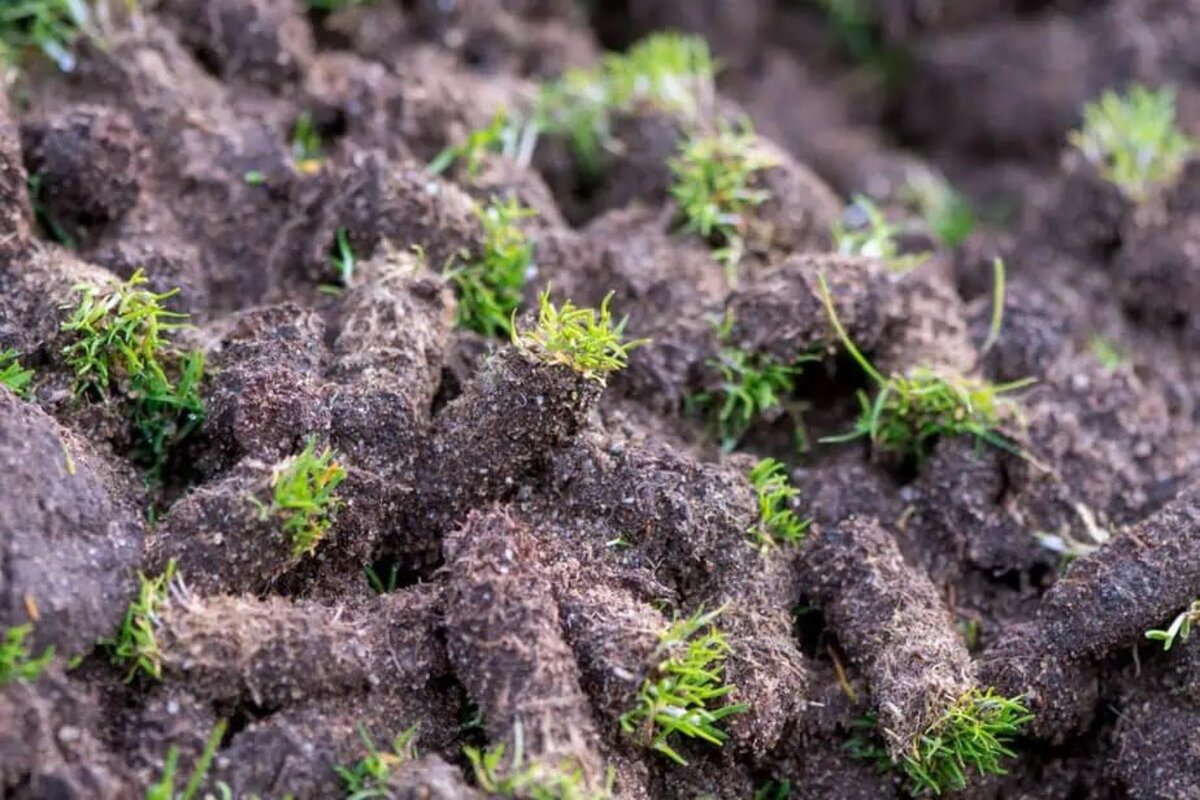Home>Gardening News and Trends>What Scotts Fertilizer To Use


Gardening News and Trends
What Scotts Fertilizer To Use
Modified: February 6, 2024
Discover the latest news on what Scotts fertilizer to use for a greener and healthier lawn. Find expert tips and recommendations to achieve the best results.
(Many of the links in this article redirect to a specific reviewed product. Your purchase of these products through affiliate links helps to generate commission for Chicagolandgardening.com, at no extra cost. Learn more)
Table of Contents
- Introduction
- Purpose of Using Scotts Fertilizer
- Factors to Consider Before Choosing Scotts Fertilizer
- Types of Scotts Fertilizer
- Understanding Your Soil Type and Needs
- Matching Your Lawn’s Nutrient Requirements
- Organic vs. Synthetic Scotts Fertilizer: Pros and Cons
- Application Tips for Scotts Fertilizer
- Maintenance and Follow-up Care
- Conclusion
Introduction
Welcome to the world of lawn care! Whether you are an experienced lawn enthusiast or a beginner looking to achieve a lush, green yard, choosing the right fertilizer is essential for healthy plant growth. Scotts Fertilizer is a popular choice among homeowners and professionals alike, known for its effectiveness and quality.
In this article, we will explore the factors to consider when selecting the appropriate Scotts Fertilizer for your lawn. From understanding the different types available to determining your lawn’s specific needs, we will provide you with the knowledge to make an informed decision.
Having a well-maintained lawn not only enhances the beauty of your home but also provides many other benefits. A healthy lawn can help cool the surrounding area, reduce erosion, absorb rainwater, and provide a safe space for children and pets to play.
Choosing the right fertilizer is like giving your lawn a nutrient boost. It replenishes essential elements that may be lacking in the soil, allowing your grass to reach its full potential. Scotts Fertilizer offers a range of products that cater to different soil types, grass species, and nutrient requirements.
However, with so many options available, it can be overwhelming to decide which Scotts Fertilizer is best for your lawn. That’s where this guide comes in. We will walk you through the process, helping you understand the various factors to consider, the types of Scotts Fertilizer available, and how to match your lawn’s needs to the right product.
So, let’s jump right in and discover the world of Scotts Fertilizer, where your lawn’s health and vibrancy await!
Purpose of Using Scotts Fertilizer
The primary purpose of using Scotts Fertilizer is to enhance the health and appearance of your lawn. Fertilizers are formulated to provide essential nutrients that may be deficient in your soil, promoting robust root growth, vibrant foliage, and overall plant vitality.
Scotts Fertilizer is specifically designed to nourish and strengthen your grass, ensuring it has the necessary elements to thrive. By providing a balanced blend of nutrients, including nitrogen, phosphorus, and potassium, Scotts Fertilizer supports healthy plant growth and helps your lawn withstand environmental stressors.
One of the main benefits of using Scotts Fertilizer is its ability to improve soil fertility. Over time, soil can become depleted of essential nutrients, hindering plant growth. Scotts Fertilizer replenishes these nutrients, creating fertile conditions that promote lush and vigorous grass.
In addition to promoting healthy growth, Scotts Fertilizer also helps to control weeds. When your lawn is adequately fertilized, it becomes denser and more robust, leaving less space for weeds to take root. Regular application of Scotts Fertilizer can help prevent weed establishment and minimize the need for herbicides.
Scotts Fertilizer also plays a crucial role in maintaining a beautiful and green lawn throughout the year. By providing a consistent supply of nutrients, it helps your grass remain healthy and vibrant, even during periods of stress. Whether it’s enduring hot and dry conditions or recovering from winter dormancy, a well-fertilized lawn is better equipped to bounce back and maintain its lush appearance.
Moreover, Scotts Fertilizer is tailored to the specific needs of different grass species and soil types. Whether you have cool-season grasses like Kentucky bluegrass or warm-season varieties like Bermuda grass, you can find a Scotts Fertilizer product that meets your lawn’s unique requirements. This customization ensures that your grass receives the right nutrients at the right time, maximizing its potential for growth and resilience.
By using Scotts Fertilizer, you are investing in the long-term health and beauty of your lawn. With consistent and proper application, Scotts Fertilizer can help you achieve a vibrant, lush, and envy-worthy lawn that will be the pride of your neighborhood.
Factors to Consider Before Choosing Scotts Fertilizer
Before selecting a Scotts Fertilizer product for your lawn, there are several important factors to consider. By understanding these factors, you can make an informed decision and choose the right fertilizer to meet the specific needs of your lawn.
1. Soil Type: The first factor to consider is your soil type. Different soil types, such as sandy, loamy, or clay, have varying nutrient-holding capacities and drainage properties. Scotts Fertilizer offers products tailored to specific soil types, ensuring that your lawn receives the correct nutrients based on its underlying soil composition.
2. Grass Species: Each grass species has unique nutritional requirements. Before selecting a Scotts Fertilizer product, identify the type of grass in your lawn, such as Bermuda grass, Kentucky bluegrass, or St. Augustine grass. This information will help you choose a fertilizer formulation that provides the necessary nutrients for optimal growth and health.
3. Nutrient Ratio: The nutrient ratio, often represented as N-P-K on fertilizer packaging, refers to the proportions of nitrogen (N), phosphorus (P), and potassium (K) in the product. Different stages of grass growth require different nutrient ratios. For example, a fertilizer with a higher nitrogen content is suitable for promoting lush foliage, while a higher phosphorus content is beneficial for root development. Consider your lawn’s growth stage and specific needs when selecting a Scotts fertilizer with the appropriate nutrient ratio.
4. Seasonal Requirements: Lawns have different nutrient requirements throughout the year. For cool-season grasses, such as Kentucky bluegrass, applying a slow-release fertilizer in early fall promotes root growth before winter dormancy. Warm-season grasses, like Bermuda grass, benefit from a higher-nitrogen fertilizer in the spring and summer to support rapid growth during the active growing season. Ensure the Scotts Fertilizer product you choose aligns with your lawn’s seasonal requirements.
5. Environmental Considerations: It’s crucial to consider the environmental impact when selecting a fertilizer. Scotts offers both synthetic and organic fertilizer options. Synthetic fertilizers provide quick-release nutrients but may have a greater risk of leaching into groundwater and causing pollution. Organic fertilizers, derived from natural sources, release nutrients slowly and are generally considered more environmentally friendly. Consider your environmental priorities when deciding between organic and synthetic Scotts Fertilizer.
6. Application Method: Consider your preferred method of fertilizer application. Scotts Fertilizer offers various application options, including granular, liquid, and ready-to-use formulations. Granular fertilizers are typically spread with a spreader, while liquid fertilizers are applied with a sprayer or hose-end attachment. Choose a Scotts Fertilizer product that aligns with your desired application method and equipment.
By taking these factors into account, you can make an informed decision when selecting a Scotts Fertilizer product. This ensures that your lawn receives the precise nutrients it needs to thrive, resulting in a healthier, greener, and more beautiful yard.
Types of Scotts Fertilizer
Scotts Fertilizer offers a range of products designed to meet the specific needs of different lawns. Understanding the different types available can help you choose the right fertilizer for your lawn’s requirements. Here are some of the main types of Scotts Fertilizer:
1. All-Purpose Fertilizer: Scotts All-Purpose Fertilizer is a versatile option that provides balanced nutrition for all types of grass. It contains a blend of nitrogen, phosphorus, and potassium, essential for promoting healthy growth and vibrant color. This type of fertilizer is suitable for general maintenance and can be applied throughout the growing season.
2. Slow-Release Fertilizer: Slow-release fertilizers provide a controlled release of nutrients over an extended period. These fertilizers are designed to deliver a steady supply of nutrition to your lawn, reducing the risk of overfeeding and minimizing the need for frequent applications. Scotts Slow-Release Fertilizer is an excellent choice for maintaining a consistent, long-lasting green lawn.
3. Starter Fertilizer: If you are establishing a new lawn or overseeding existing turf, Scotts Starter Fertilizer is the ideal choice. This type of fertilizer contains a higher phosphorus content, which promotes strong root development and helps new grass seedlings establish quickly. Scotts Starter Fertilizer provides the nutrients necessary to ensure a healthy and thriving lawn from the start.
4. Weed and Feed Fertilizer: Scotts Weed and Feed Fertilizer is a combination product that addresses both fertilization and weed control. It contains herbicides that selectively target common lawn weeds, such as dandelions, while providing essential nutrients to your grass. This type of fertilizer is convenient for eliminating weeds and promoting healthy growth, saving you time and effort in lawn care maintenance.
5. Organic Fertilizer: Scotts also offers organic fertilizer options for those who prefer a more natural approach. Organic fertilizers are derived from natural sources such as animal manure, compost, and plant-based materials. These fertilizers release nutrients slowly, providing a sustainable and environmentally friendly solution. Scotts Organic Fertilizer supports healthy soil biology and helps improve soil structure, fertility, and overall lawn health.
6. Specialty Fertilizers: Scotts Fertilizer offers a variety of specialty formulations to address specific lawn care needs. These include fertilizers formulated for specific grass types, such as Scotts Bermuda Grass Fertilizer or Scotts Kentucky Bluegrass Fertilizer. Specialty fertilizers may also target specific issues, such as Scotts Moss Control Fertilizer or Scotts Winterizer Fertilizer for preparing your lawn for winter dormancy.
Consider your lawn’s specific requirements and goals when choosing a Scotts Fertilizer product. Whether you need an all-purpose fertilizer, a slow-release formula, or a specialized formulation, Scotts has a fertilizer option to help you achieve a healthy, vibrant, and thriving lawn.
Understanding Your Soil Type and Needs
Understanding your soil type is essential when it comes to selecting the right Scotts Fertilizer for your lawn. Different soil types have distinct characteristics that affect nutrient availability and drainage. By analyzing your soil type, you can better meet your lawn’s specific nutrient requirements. Here are some key soil types and their considerations:
1. Sandy Soil: Sandy soil is known for its large particles and excellent drainage. However, it also tends to have low nutrient-holding capacity. Scotts Fertilizer for sandy soil is designed to provide a higher nutrient concentration and boost organic matter content to enhance water and nutrient retention. Additionally, frequent application may be necessary to replenish nutrients that leach quickly through sandy soil.
2. Clay Soil: Clay soil is made up of fine particles and retains water well but drains poorly. It tends to become compacted, leading to waterlogging and lack of oxygen for root development. Scotts Fertilizer for clay soil focuses on improving soil structure by enhancing drainage and preventing compaction. These fertilizers often include components that break up clay particles and promote aeration.
3. Loamy Soil: Loamy soil is considered the ideal soil type for plant growth. It has a balanced mixture of sand, silt, and clay particles, providing good drainage while retaining sufficient moisture. Scotts Fertilizer for loamy soil aims to maintain the soil’s optimal nutrient levels and ensure healthy nutrient uptake by the grass. These fertilizers typically provide a balanced nutrient ratio suitable for a wide range of grass types.
4. pH Balance: Apart from soil type, it is crucial to consider the pH level of your soil. Soil pH affects nutrient availability to plants. Grasses generally prefer a slightly acidic to neutral pH range. Scotts Fertilizer offers products that are specifically formulated for acidic or alkaline soil. If you are unsure about your soil’s pH level, it is advisable to conduct a soil test to determine the appropriate fertilizer choice.
In addition to soil type, consider the specific needs of your lawn. Factors such as grass species, climate, and the level of maintenance desired play a role in determining the appropriate Scotts Fertilizer. For example, high-traffic areas may require additional fertilizer applications to promote recovery and resilience.
By understanding your soil type and considering your lawn’s specific needs, you can choose the right Scotts Fertilizer product. This ensures that your grass receives the necessary nutrients to thrive, resulting in a healthy and beautiful lawn.
Matching Your Lawn’s Nutrient Requirements
Matching your lawn’s nutrient requirements with the right Scotts Fertilizer is crucial for achieving optimal growth and health. Different grass species and stages of growth have varying nutrient needs. By understanding these requirements, you can select a Scotts Fertilizer product that provides the necessary nutrients your lawn needs. Here are some key considerations:
1. Grass Species: Different grass species have unique nutrient requirements. Cool-season grasses, such as Kentucky bluegrass and fescue, thrive in cooler climates and have specific needs for nitrogen, phosphorus, and potassium. Warm-season grasses, such as Bermuda grass and zoysia grass, have different nutrient requirements and perform best in warmer regions. Choose a Scotts Fertilizer product that is designed for your specific grass species to ensure optimal growth and health.
2. Growth Stage: Lawn grass goes through different growth stages, each with specific nutrient needs. During the active growth phase, typically in spring and summer, nitrogen is crucial for promoting lush foliage and vigorous growth. Phosphorus is more important during the establishment stages, such as when you are seeding a new lawn or overseeding. Scotts Fertilizer products often specify the appropriate application timing and nutrient ratios for each growth stage.
3. Nutrient Ratios: The nutrient ratio, commonly represented as N-P-K on fertilizer packaging, refers to the percentages of nitrogen (N), phosphorus (P), and potassium (K) in the product. Each nutrient plays a specific role in grass growth and development. Nitrogen promotes healthy leaf and stem growth, phosphorus supports root development, and potassium enhances stress tolerance and disease resistance. Consider the nutrient ratios recommended for your specific grass species and growth stage when selecting a Scotts Fertilizer.
4. Soil Test Results: Conducting a soil test is an excellent way to determine your lawn’s specific nutrient needs. A soil test provides valuable information about your soil’s nutrient content and pH level. Based on the test results, you can choose a Scotts Fertilizer that addresses any deficiencies or imbalances in nutrients. Soil tests are typically conducted by collecting soil samples and sending them to a laboratory for analysis.
5. Fertilizer Formulation: Scotts Fertilizer offers a variety of formulations, including liquid, granular, and slow-release options. Consider your lawn’s needs and your preferred method of application when selecting a formulation. Liquid fertilizers are absorbed more quickly by plants, while granular fertilizers are spread over the lawn surface and absorbed gradually. Slow-release fertilizers provide a steady supply of nutrients over an extended period, reducing the frequency of applications.
By matching your lawn’s specific nutrient requirements with the right Scotts Fertilizer, you can ensure that your grass receives the essential nutrients it needs for healthy growth and development. This targeted approach will help you achieve a vibrant and thriving lawn that becomes the envy of the neighborhood.
Organic vs. Synthetic Scotts Fertilizer: Pros and Cons
When choosing a Scotts Fertilizer, one important decision to make is whether to use organic or synthetic options. Both types have their advantages and considerations. Understanding the pros and cons of each can help you make an informed decision regarding which Scotts Fertilizer is best suited for your lawn. Here is an overview:
Organic Scotts Fertilizer:
- Pros:
- Environmentally-friendly: Organic fertilizers are derived from natural sources, such as compost, manure, and plant-based materials. They are less likely to harm the environment and are generally considered more sustainable.
- Slow-release nutrients: Organic fertilizers release nutrients gradually over time, providing a steady supply to your lawn. This can help reduce the risk of nutrient leaching and overfeeding.
- Improved soil health: Organic fertilizers enhance soil structure and increase microbial activity, improving the overall health and fertility of the soil. They promote beneficial soil organisms and help increase water retention.
- Long-lasting effects: Organic fertilizers have residual effects and can continue to nourish your lawn over an extended period. They contribute to long-term soil health and plant vitality.
Synthetic Scotts Fertilizer:
- Pros:
- Immediate results: Synthetic fertilizers contain readily-available nutrients that can be quickly absorbed by plants. They deliver fast and noticeable results, promoting rapid growth and color intensity in your lawn.
- Precision and customization: Synthetic fertilizers offer precise control over nutrient ratios, allowing you to tailor the fertilizer to your lawn’s specific needs. This customization can help address nutrient deficiencies more effectively.
- Convenience and ease of use: Synthetic fertilizers are typically available in granular or liquid forms that are easy to apply with minimal preparation. They often come with clear instructions for proper application.
- Specific nutrient targeting: Synthetic fertilizers can be formulated to provide specific nutrients that may be lacking in your soil. This allows for targeted nutrient supplementation to address specific lawn issues.
Cons of both organic and synthetic fertilizers include:
Organic Fertilizers: Organic fertilizers tend to have lower nutrient concentrations compared to synthetic options. This may result in the need for more frequent applications to achieve the desired results. They may also have a bit of an odor, especially if derived from manure or compost.
Synthetic Fertilizers: Synthetic fertilizers are often associated with a higher risk of nutrient leaching, especially if overapplied or during heavy rainfall. There is also a potential risk of environmental pollution if not used according to instructions. Additionally, excessive use of synthetic fertilizers can lead to nutrient imbalances and soil degradation over time.
Ultimately, the choice between organic and synthetic Scotts Fertilizer depends on your personal preferences, environmental concerns, and specific lawn care needs. Consider factors such as environmental impact, long-term soil health, desired timeline for results, and ease of application when making your decision.
Remember, regardless of the type of Scotts Fertilizer you choose, proper application and adherence to instructions are crucial for achieving the best results and maintaining a healthy, green lawn.
Application Tips for Scotts Fertilizer
Applying Scotts Fertilizer correctly is essential to ensure optimal results and promote a healthy, lush lawn. Here are some helpful tips to keep in mind when applying Scotts Fertilizer:
1. Read and Follow Instructions: Before applying any Scotts Fertilizer product, carefully read and follow the instructions provided on the packaging. Each product may have specific guidelines regarding application rates, timing, and preparation.
2. Choose the Right Spreader: If you are using a granular Scotts Fertilizer, choosing the appropriate spreader is crucial for even distribution. A broadcast spreader is usually recommended for larger areas, while a drop spreader works well for smaller or more precise applications.
3. Calibrate the Spreader: To ensure accurate spreading, calibrate your spreader according to the recommendations on the fertilizer packaging. This helps prevent under or over-application, ensuring that your lawn receives the correct amount of fertilizer.
4. Apply Fertilizer to Dry Grass: It is generally recommended to apply Scotts Fertilizer to dry grass, such as after a light rain has dried or in the early morning when dew has evaporated. This helps to prevent the granules from sticking together and ensures better coverage and absorption into the soil.
5. Follow the Recommended Application Rate: Scotts Fertilizer products typically provide guidelines for the recommended application rate. Applying too much fertilizer can damage your lawn while applying too little may not provide the desired results. Use a steady and consistent pace during application to achieve an even distribution.
6. Water in the Fertilizer: After applying Scotts Fertilizer, it is essential to water your lawn thoroughly. This helps the granules dissolve and release the nutrients into the soil. Follow the instructions provided on the packaging regarding the amount of water needed for activation.
7. Maintain Proper Lawn Care Practices: While Scotts Fertilizer is beneficial for your lawn’s health, it is important to reinforce it with proper lawn care practices. Regular mowing, adequate watering, and managing weeds and pests are essential for maintaining a healthy and vibrant lawn.
8. Follow Local Regulations: Be aware of any local regulations or guidelines regarding fertilizer application in your area. Some regions may have restrictions on certain types of fertilizers or application methods to protect water quality and prevent excessive nutrient runoff.
9. Store and Dispose Properly: Store unused Scotts Fertilizer in a cool, dry place, away from children and pets. Follow local guidelines for the proper disposal of empty packaging or any unused or expired fertilizer.
By following these application tips, you can ensure that your Scotts Fertilizer is applied correctly, maximizing its effectiveness and providing your lawn with the nutrients it needs to thrive. Remember, proper application and adherence to instructions are key to achieving a healthy, green lawn.
Maintenance and Follow-up Care
Applying Scotts Fertilizer is just the first step towards achieving a healthy and vibrant lawn. Proper maintenance and follow-up care are essential to ensure long-lasting results and continued success. Here are some maintenance tips to keep your lawn in top shape:
1. Watering: Adequate watering is crucial for the absorption of nutrients and overall lawn health. Water your lawn deeply, but infrequently, to encourage deep root growth. Aim for about 1 inch of water per week, either from rainfall or irrigation. Watering in the early morning or late afternoon minimizes water loss due to evaporation.
2. Mowing: Regular mowing promotes a healthy and manicured lawn. Set your mower at the appropriate height for your specific grass type and avoid removing more than one-third of the grass height at a time. This prevents stress and maintains the grass’s density and vigor.
3. Weed Control: Maintain a weed-free lawn by practicing proper weed control. Regularly inspect your lawn for weeds and use appropriate methods to remove them. In addition, utilizing a weed and feed fertilizer, such as Scotts Weed and Feed, can help prevent the establishment of common lawn weeds.
4. Soil Aeration: Over time, soil can become compacted, which hinders proper water and nutrient absorption. Aerating your lawn annually helps alleviate soil compaction and promotes healthy root growth. Consider renting a motorized aerator or using manual aerator tools to effectively loosen the soil.
5. Overseeding: To maintain a thick and lush lawn, consider overseeding your existing grass. Overseeding helps fill in thin or bare spots and enhances the lawn’s overall density. Choose a grass seed variety that is compatible with your existing grass type and follow the recommended seeding rates and techniques.
6. Follow Fertilizer Schedule: Consistency is key when it comes to fertilizing your lawn. Follow the recommended fertilizer schedule provided by Scotts for optimal results. Depending on the product you are using, you may need to apply fertilizer every 6-8 weeks or as directed on the packaging.
7. Proper Timing: Timing is important when it comes to maintenance tasks. Perform lawn care activities, such as mowing, aerating, and overseeding, at the appropriate times based on your specific grass type and regional climate. Following recommended timing guidelines ensures the best results and avoids potential damage.
8. Soil Testing: Regular soil testing can provide valuable insights into your lawn’s nutrient levels and pH balance. Consider testing your soil every few years to make informed decisions about adjusting nutrient application or pH correction as necessary.
By implementing these maintenance and follow-up care practices, you can ensure that your lawn remains healthy, vibrant, and resilient. With proper care and attention, your Scotts Fertilizer will continue to enhance the beauty of your yard and provide long-lasting enjoyment for you and your family.
Conclusion
Selecting and using the right Scotts Fertilizer is key to achieving a healthy, vibrant, and lush lawn. By considering factors such as soil type, grass species, nutrient requirements, and environmental considerations, you can make an informed decision when choosing a Scotts Fertilizer product.
Understanding your lawn’s specific needs and matching them with the appropriate Scotts Fertilizer formulation ensures that your grass receives the necessary nutrients for optimal growth and vitality. Whether you choose an all-purpose fertilizer, a slow-release option, or a specialized formulation for a specific grass type, Scotts offers a range of products to cater to your lawn’s unique requirements.
Additionally, considering whether to use organic or synthetic Scotts Fertilizer allows you to align your lawn care practices with your environmental values. Organic fertilizers provide sustainable and slow-release nutrients that promote soil health, while synthetic fertilizers offer fast-acting results and precise nutrient customization.
Proper application techniques, such as following instructions, calibrating spreaders, and watering in the fertilizer, ensure that your Scotts Fertilizer is effectively absorbed by your lawn. Ongoing maintenance, including proper watering, mowing, weed control, and soil aeration, supports the long-term health and beauty of your lawn.
Remember to follow local regulations, store and dispose of fertilizers properly, and perform soil testing periodically to make informed decisions about your lawn’s nutrient needs.
With the right Scotts Fertilizer and diligent maintenance, you can achieve a vibrant, healthy, and envy-worthy lawn that enhances the beauty of your home and provides a welcoming outdoor space for your family and friends to enjoy.










